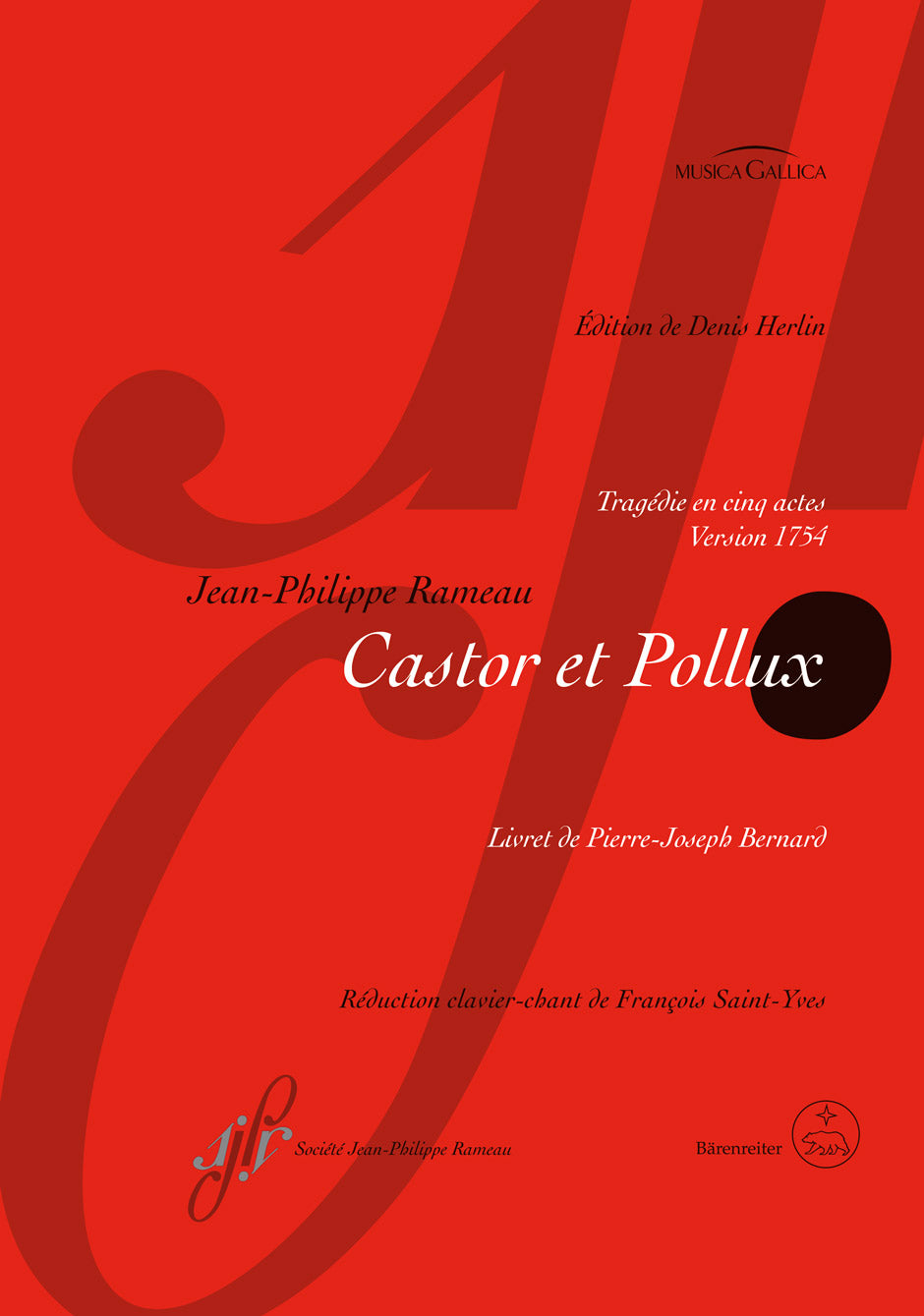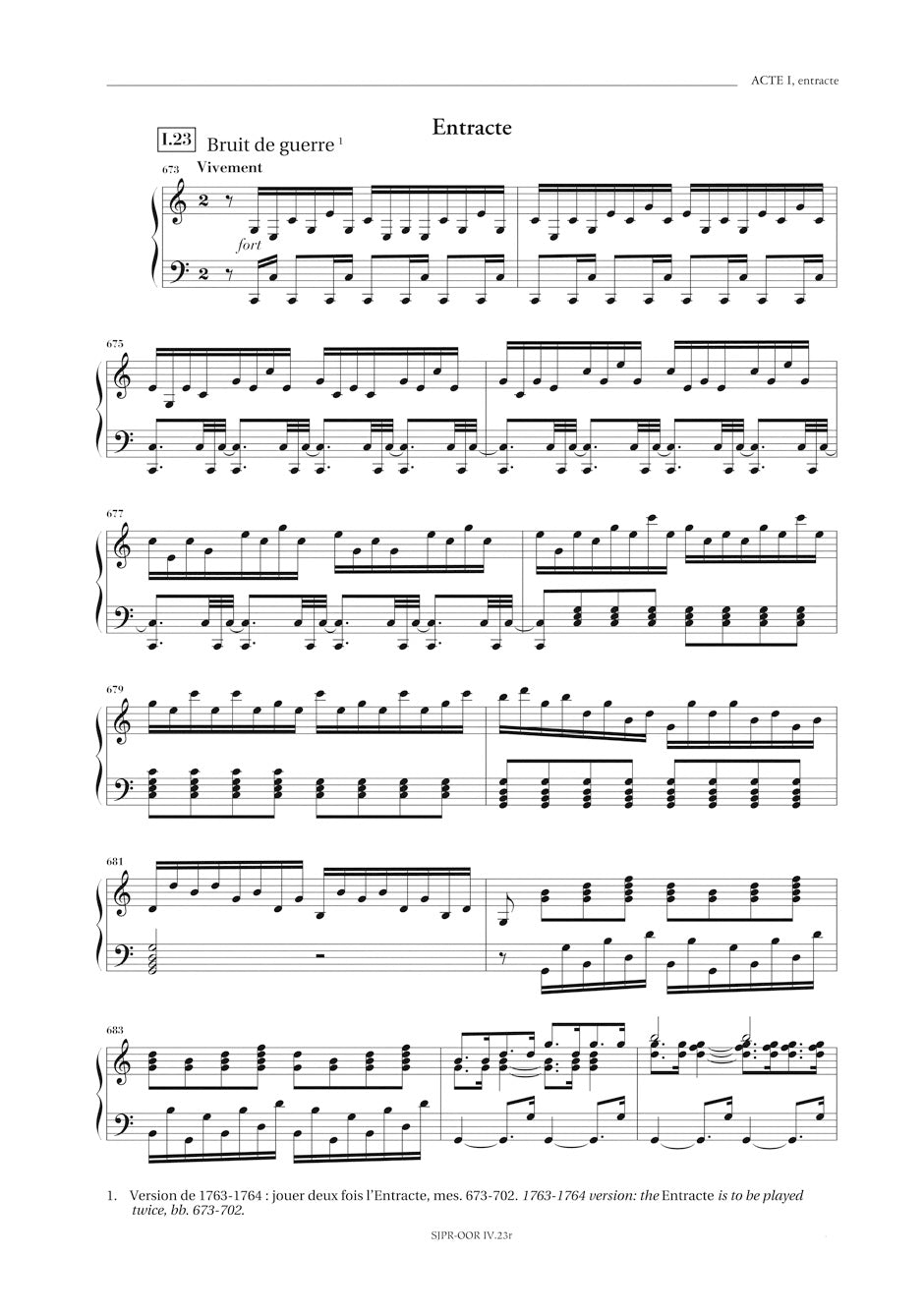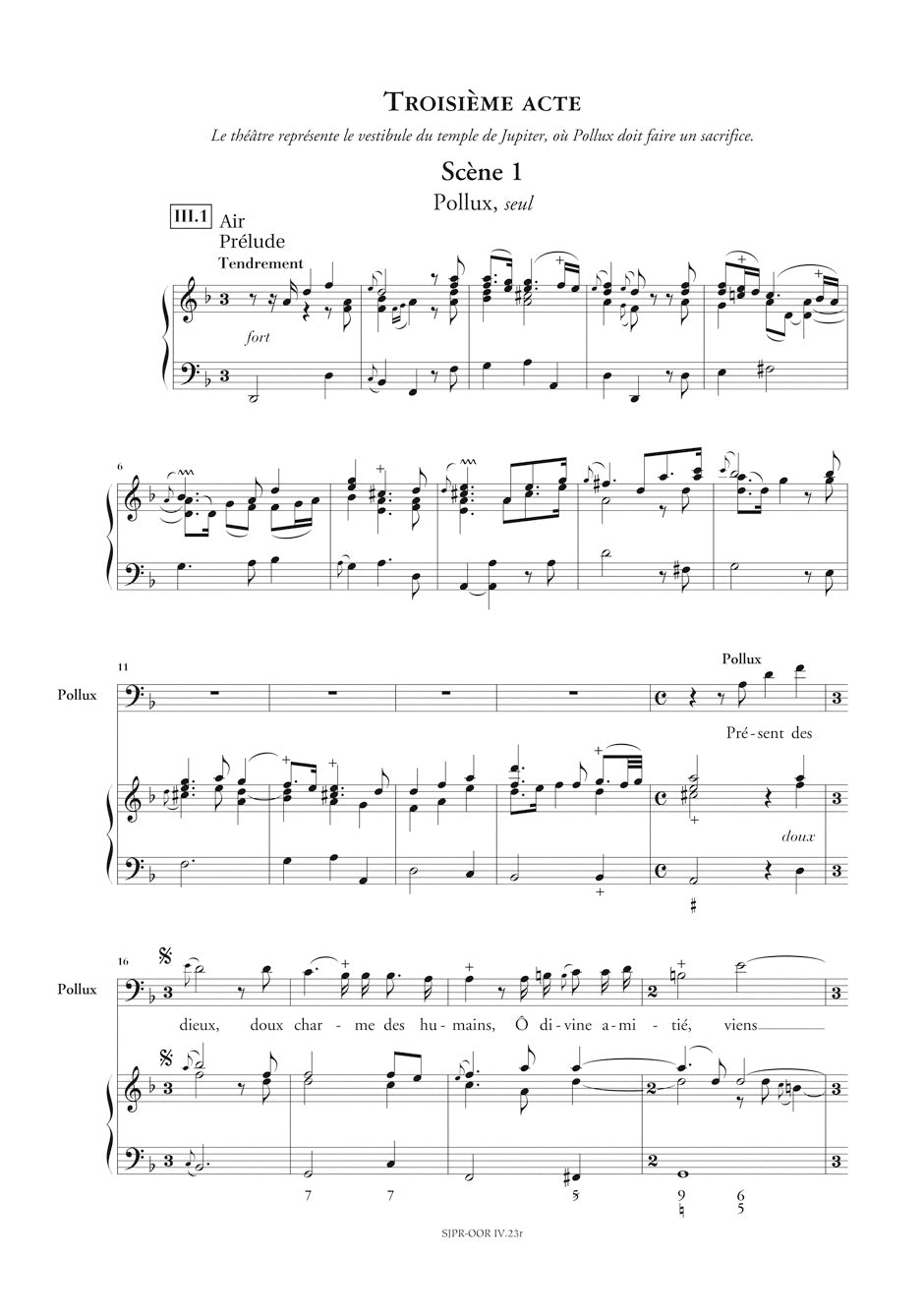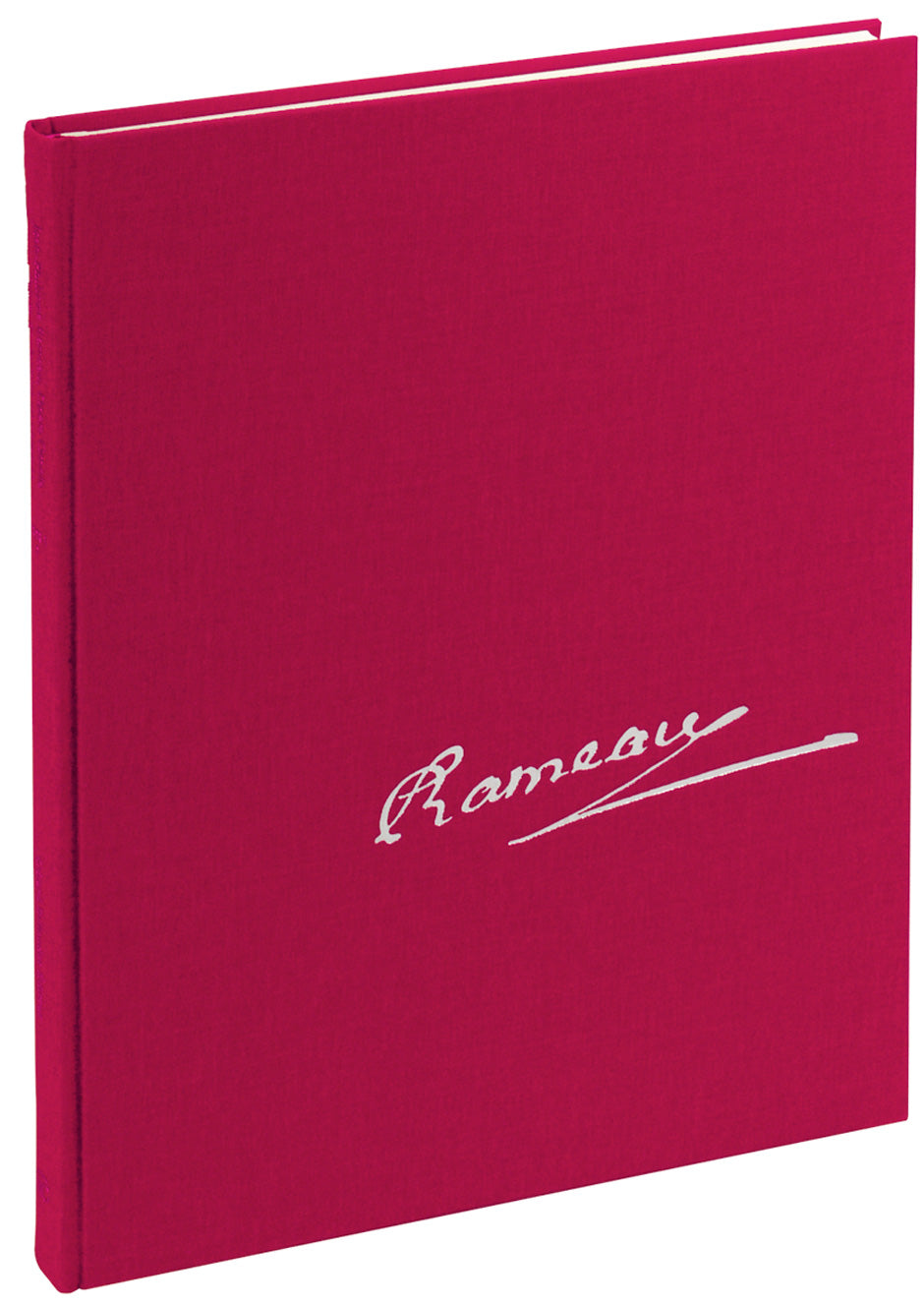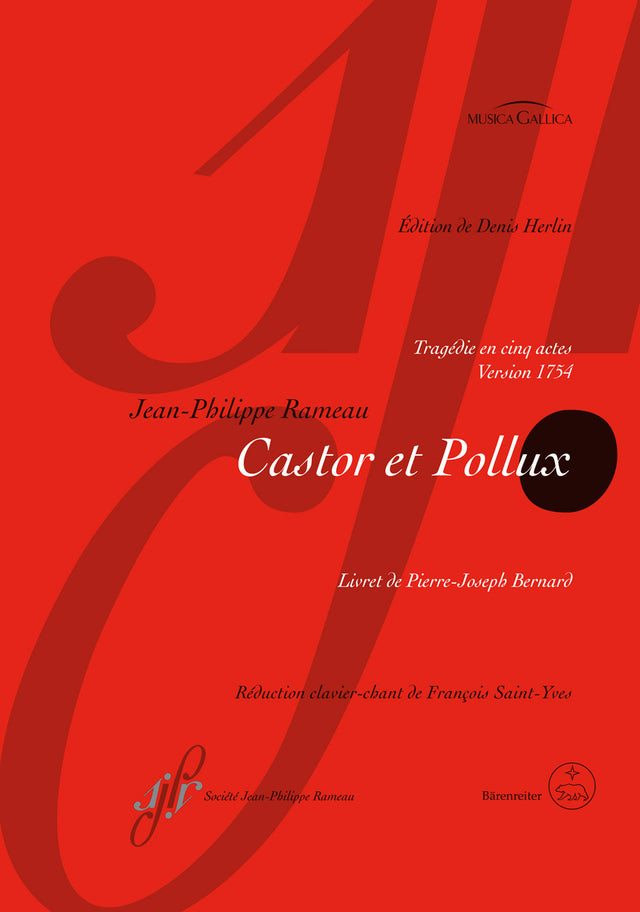Rameau: Castor et Pollux, RCT 32 B
In stock and typically ships within 1 business day.
- Composer: Jean-Philippe Rameau (1683-1764)
- Instrumentation (this edition): Piano Reduction, Voice
- Originally for: Opera
- Work: Castor et Pollux, RCT 32
- Work Language: French
- ISMN:
- Size: 7.5 x 10.6 inches
- Pages: 281
- Urtext / Critical Edition
Description
Amongst Rameau's stage works which have come down to us in two main versions, such as "Dardanus" (1739, 1744), "Platée" (1745, 1749) and "Zoroastre" (1749, 1756), none fell into oblivion for as long a period as "Castor et Pollux". After the work had been premiered in 1737, not until 1754 did Rameau decide to revise it. He asked his librettist "Gentil-Bernard" to add an act to the tragedy and to give more weight to the brotherly friendship between Castor and Pollux.
The main plot remains very similar to the one of 1737, aside from the fact that the sisters Télaïre and Phébé no longer are in love - the one with Castor the other with Pollux - but rather both with Castor which is the reason why Phébé is jealous of Télaïre. Already at the beginning of the first act Pollux relinquishes his love of Télaïre to the benefit of Castor. Castor, however, is killed by Linceus and finds himself in Hades. Pollux commits to saving his brother, sacrifices his immortality and declares his willingness to take Castor's place in Hades so that his brother and Télaïre may be reunited. Jupiter, moved by this sacrifice, frees Pollux and bestows the couple immortality by giving them a place in the zodiac.
Following the editorial principles of the "Opera omnia Rameau" (and in contrast to the 1903 edition by August Chapuis issued within the old Rameau series), both versions of "Castor et Pollux", the version of 1737 (OOR IV.3) and the present version of 1754 (OOR IV.23), are published in two separate volumes in their entirety. Owing to the discovery of the original performance material, today preserved at the Gesellschaft der Musikfreunde in Vienna, the second version of 1754, which up until today was in the shadow of the 1737 version, can now be presented with its more tightly woven plot in all its vigor and dramatic momentum.
This edition is enriched with twelve additions which enable the performance of the 1763-1764 version when the work was restaged.
Publishers use a lot of words to describe what they sell, and we know it can be confusing. We've tried to be as clear as possible to make sure you get exactly what you are looking for. Below are descriptions of the terms that we use to describe the various formats that music often comes in.
Choral Score
A score for vocalists that only contains the vocal lines. The instrumental parts are not there for reference. Generally, cheaper than a vocal score and requires multiple copies for purchase.
Facsimile
Reproductions of the original hand-written scores from the composer.
Full Score
For ensemble music, this indicates that the edition contains all parts on a single system (there are not separate parts for each player). In larger ensembles, this is for the conductor.
Hardcover
Hardbound. Generally either linen-covered or half-leather.
Orchestral Parts
Similar to a wind set, this is a collection of parts. In the case of strings, the numbers listed are the number of copies included, though generally these are available individually (often with minimum quantities required).
Paperback
When publishers offer multiple bindings (e.g. hardcover) or study scores, this is the "standard" version. If you're planning to play the music, this is probably what you want.
Performance / Playing Score
A score of the music containing all parts on one system, intended for players to share. There are not separate parts for each player.
Set of Parts
For ensemble music, this indicates that there are separate individual parts for each player.
Solo Part with Piano Reduction
For solo pieces with orchestra, this is a version that contains a piano reduction of the orchestra parts. For piano pieces, two copies are typically needed for performance.
Study Score
A small (think choral size) copy of the complete score meant for studying, and not playing. They make great add-ons when learning concertos and small chamber works.
Vocal Score
A score prepared for vocalists that includes the piano/organ part or a reduction of the instrumental parts.
Wind Set
For orchestral music, this is a collection of wind and percussion parts. The specific quantities of each instrument are notated.
With Audio
In addition to the printed music, the edition contains recordings of the pieces. This may be an included CD, or access to files on the internet.
With / Without Fingering (Markings)
Some publishers prepare two copies - a pure Urtext edition that includes no fingering (or bowing) suggestions and a lightly edited version that includes a minimal number of editorial markings.

